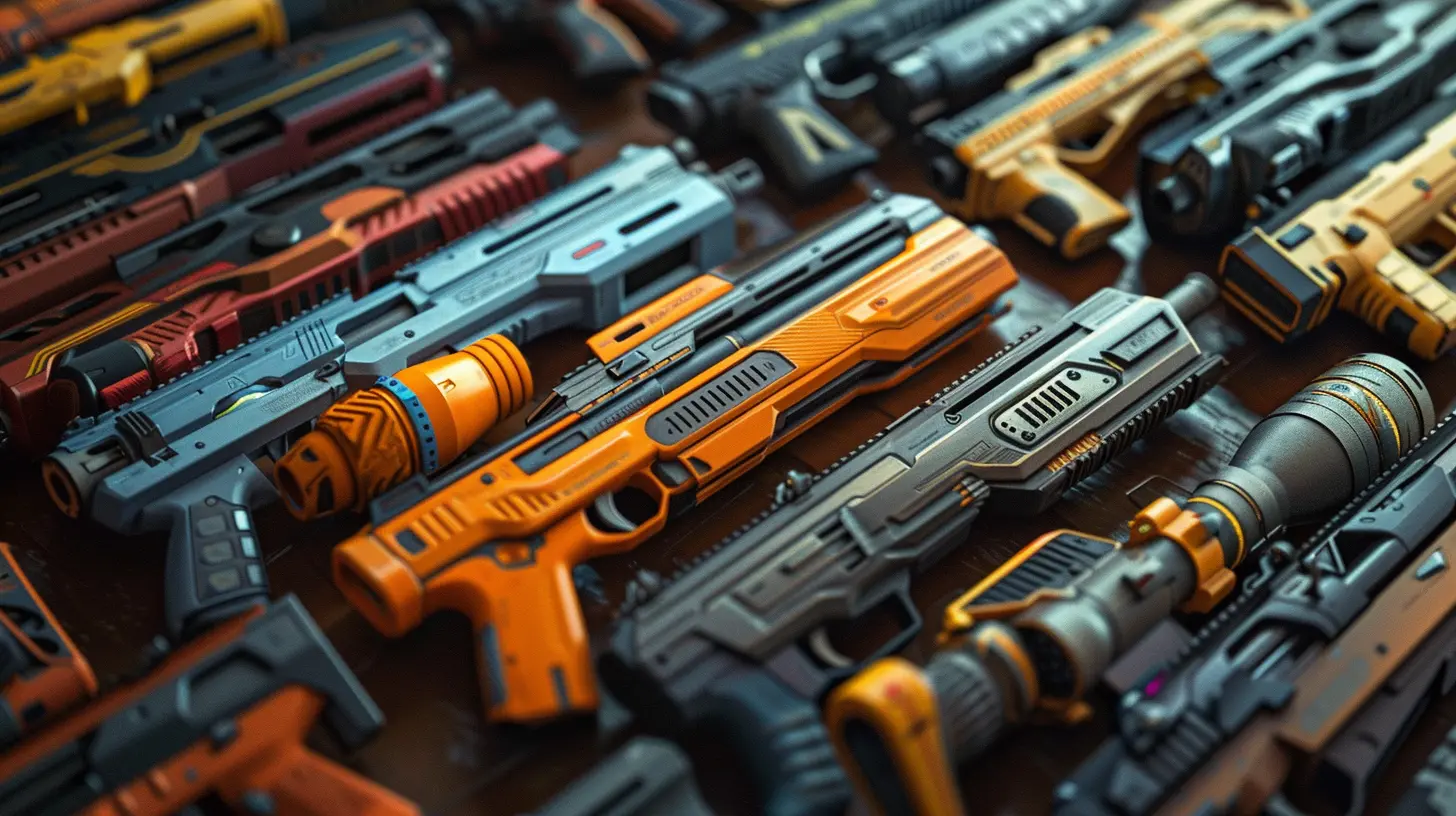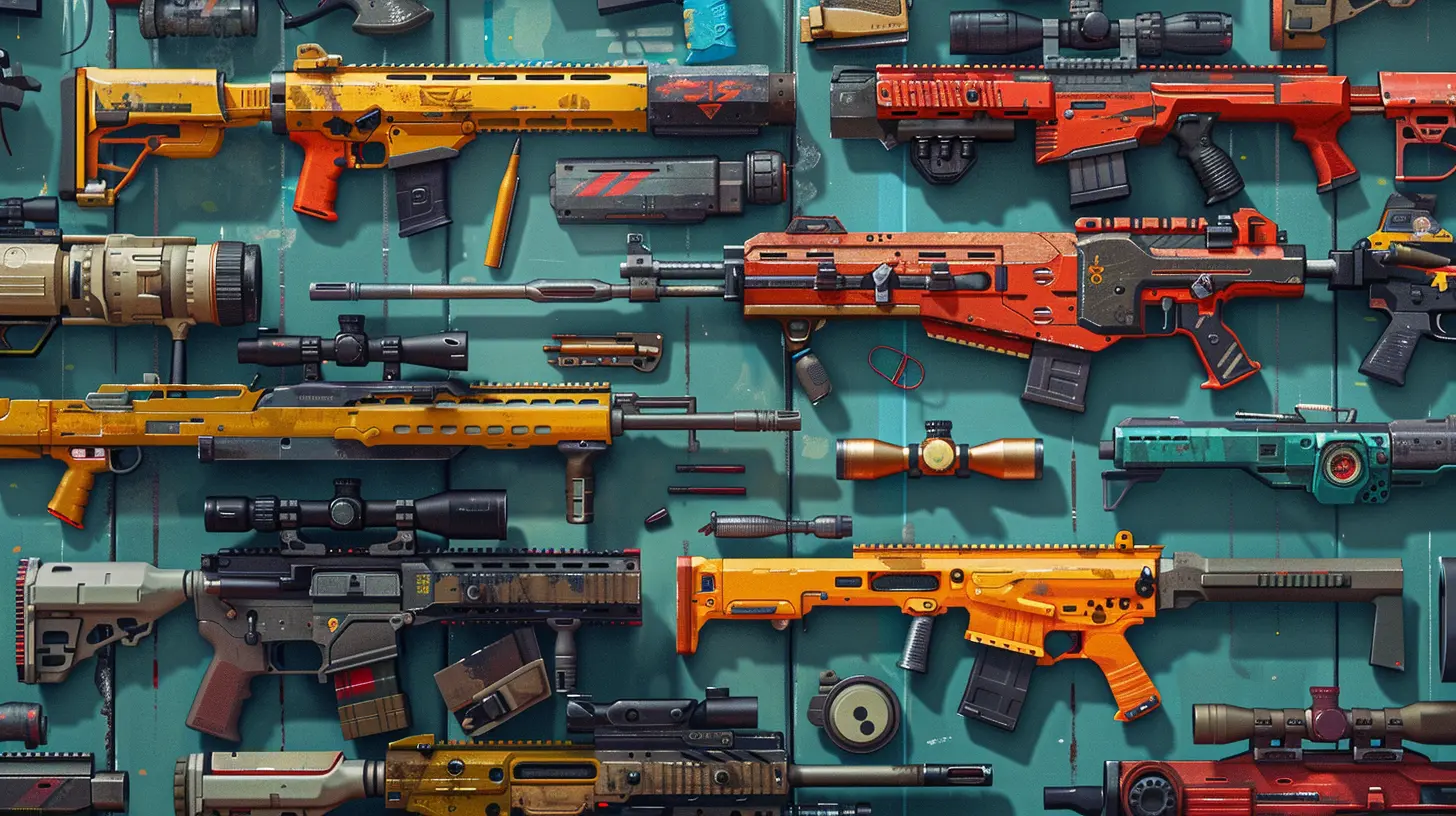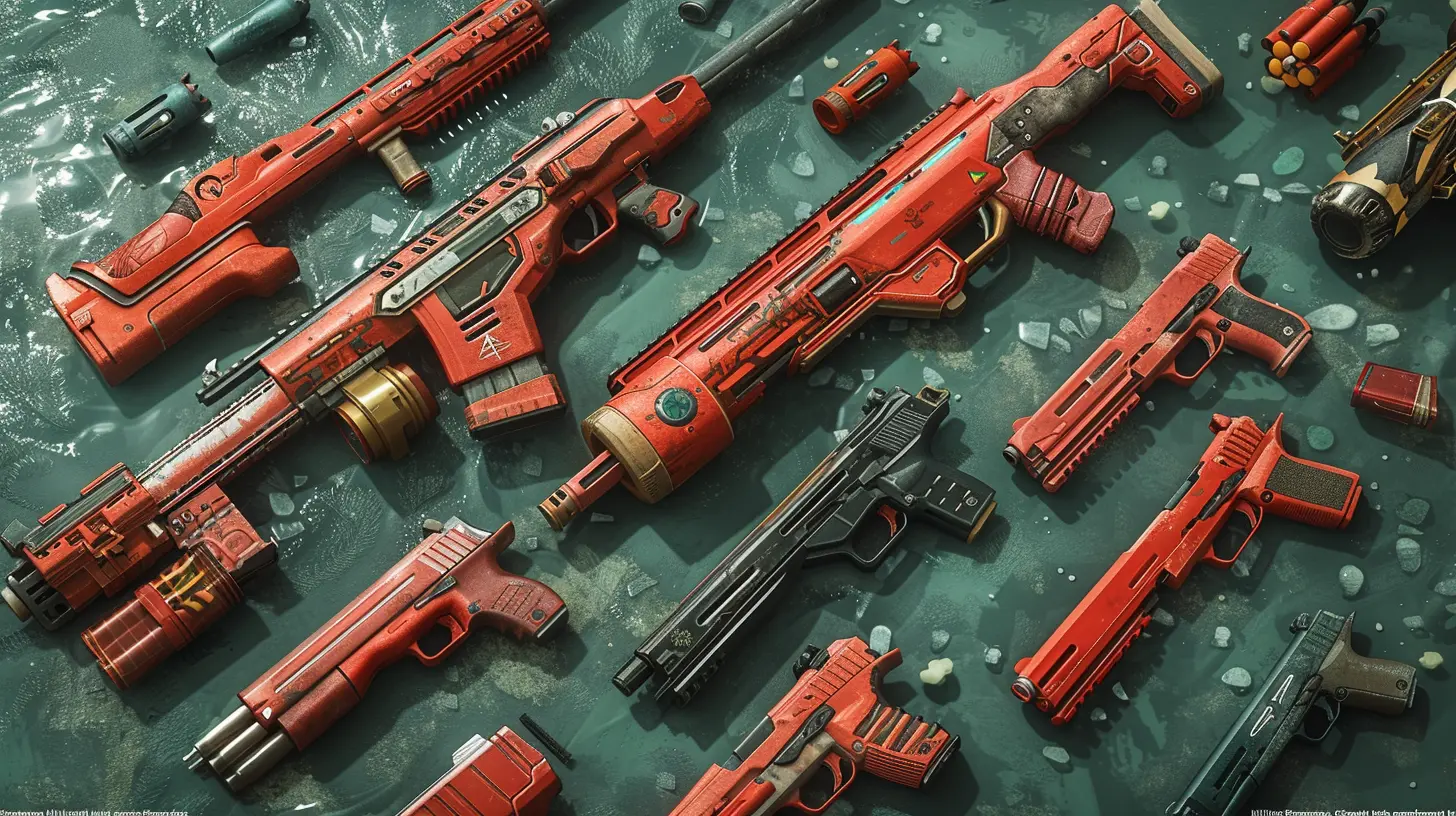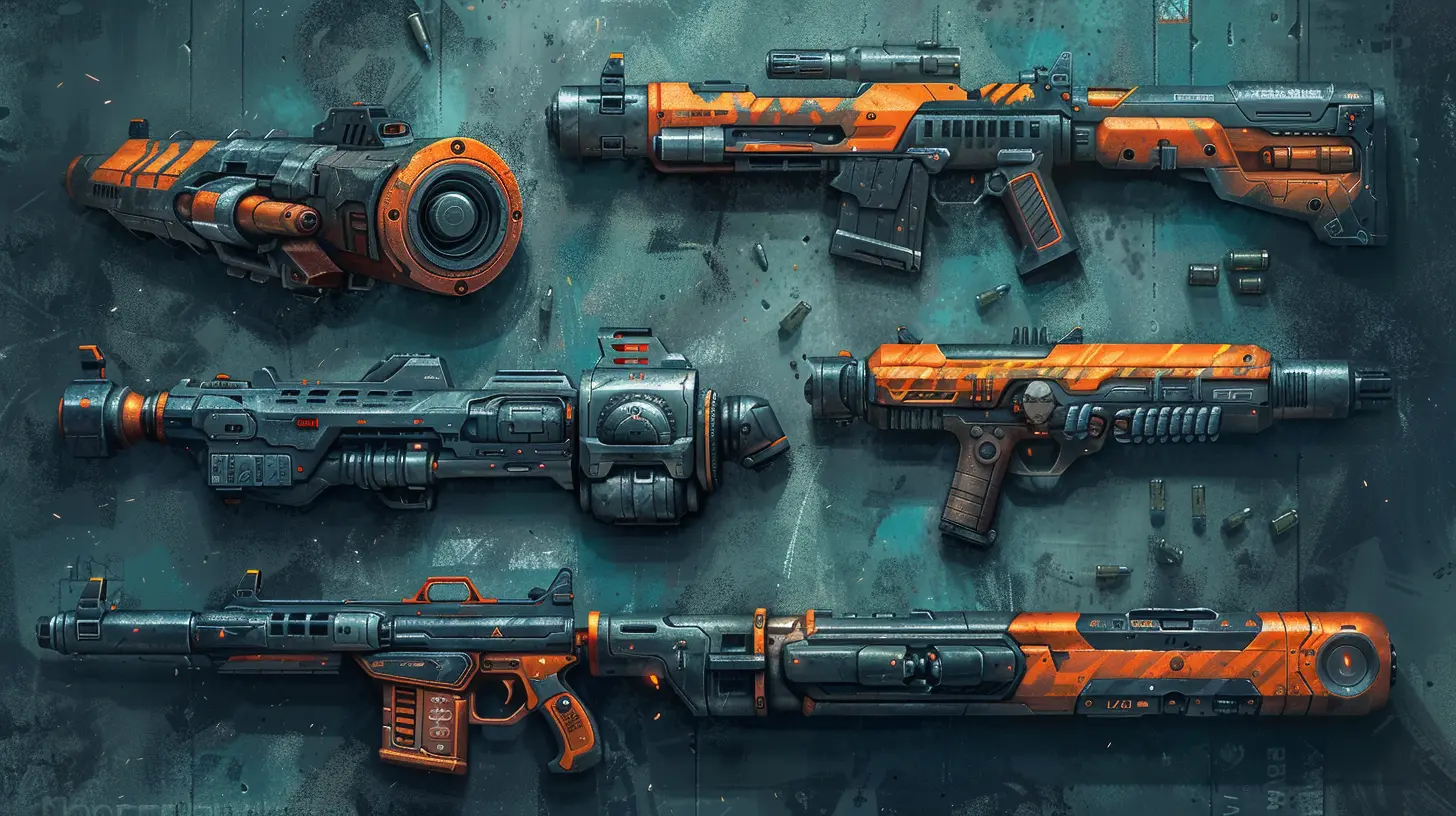The Role of Weapon Customization in Competitive Play
4 October 2025
Alright, let’s talk about something that’s become a huge game-changer (literally) in competitive gaming — weapon customization. If you’ve spent any amount of time grinding ranked matches, you know it’s not just about having fast reflexes or map knowledge anymore. Customizing your weapon loadout has become just as important as landing that first headshot.
But why is that? What makes slapping a different sight on your AR or tweaking your recoil control so impactful in today’s hyper-competitive online arenas?
Grab your controller or mouse — we’re diving deep into the role weapon customization plays in competitive play and how it could be the edge between victory and defeat.
What Is Weapon Customization, Really?
Let’s start with the basics. Weapon customization refers to the tweaks and mods players apply to their in-game weapons. It could include:- Scopes and sights
- Grips and stocks
- Barrel attachments
- Ammunition type
- Skins (though mostly cosmetic, some argue skins change perception and feel)
This feature is now a staple in most first-person and even some third-person shooters like Call of Duty, Battlefield, Apex Legends, Rainbow Six Siege, and Valorant. Heck, even Fortnite has begun dipping its toes into customizable weapon features.
So, why all the fuss? Because in competitive play, every single advantage matters.
Why Weapon Customization Is a Game-Changer in Competitive Play
1. It Boosts Mechanical Performance
In pro-level gaming, milliseconds matter. One minor tweak — say, reducing vertical recoil with a foregrip — can help land more shots accurately. That’s the kind of thing that separates a casual player from someone climbing the top tiers of ranked play.Ever wonder why you get melted by that one guy who just seems to laser you across the map? It might not just be skill. It could be that his weapon build is specifically optimized for fast aim-down-sight (ADS) time and low recoil. Customization lets players fine-tune weapon stats like:
- Rate of fire
- Bullet spread
- Stability
- Reload speed
- Aim time
When you think about it, it's like tuning a race car. You’re not just driving any car — you’re adjusting tire pressure, suspension, and gear ratio for max performance on the track. Same idea here.
2. Adapts to Playstyle
Not everyone plays the same way — and that’s the beauty of customization. Are you a run-and-gun freak who thrives on close-quarter chaos? Or maybe a patient sniper who holds down lanes with deadly precision? There’s a loadout for that.Customization allows your weapon to match your playstyle perfectly. Want to increase hip-fire accuracy at the cost of range? Done. Need to swap out ammo for better penetration through walls? Easy.
In competitive environments where syncing your playstyle with your role is key, this level of personalization is essential.
3. Encourages Meta Evolution
In online shooters, the "meta" (most effective tactics available) isn’t static. It evolves constantly. Weapon customization drives this evolution. And competitive players? They chase the meta like it’s the last train home.Let me paint a picture: A new attachment combo becomes popular in pro play because it shaves off a few frames from the ADS speed. Suddenly, ranked lobbies are filled with that build. Developers take notice, tweak the numbers, and bam! — the meta shifts again.
This constant push-pull between developers and the player base is part of what keeps competitive gaming fresh and unpredictable.
The Psychological Edge of Customization
Okay, this might sound a bit out there — but stay with me.Customizing your weapon isn’t just about numbers. It’s also about mindset. When you create a loadout that you’re comfortable with, that feels like an extension of your playstyle, you get more confident. You play smoother. You don’t second guess.
It’s like a chef having their go-to knife. Or a musician with their favorite guitar. Familiar tools lead to better performance because the muscle memory is baked in.
Consistency breeds confidence. And in high-stakes gameplay, confidence can be the difference between clutching a round or taking the L.
Weapon Customization and Team Strategy
In team-based games like Rainbow Six Siege or Valorant, weapon customization plays a strategic role too. Teams often assign specific roles — entry fragger, support, sniper, flanker — and each role demands a different weapon setup.Here’s how it ties into team dynamics:
- Entry fraggers might prefer builds with high mobility and fast ADS times.
- Supports might take weapons with utility-based attachments, like under-barrel grenade launchers or smoke rounds.
- Snipers will opt for high-zoom scopes and stabilization attachments.
- Defenders may load up on heavy guns with suppressors to play stealthy.
When every team member has a loadout that complements their role and playstyle, the squad operates like a well-oiled machine — and that’s crucial if you’re going up against a coordinated enemy.
Customization as a Learning Tool
Here’s a sleeper benefit people don’t talk about enough — customization helps you learn the game.Every time you tweak something — a sight, a barrel, or a trigger discipline mod — you’re running a micro-experiment. You're learning what works and what doesn't. That kind of trial-and-error builds a deeper understanding of weapon mechanics, recoil patterns, and engagement ranges.
You're not just getting better with that specific loadout; you’re becoming a smarter, more adaptable player overall.
The Competitive Scene's Take
If you follow esports or watch competitive streamers, you’ll notice one thing: loadout discussions are everywhere.- Pro players release weapon build guides
- Analysts break down meta loadouts
- Teams ban or avoid certain combinations in scrims
Why? Because tiny customization decisions can make or break a match. We're talking about the highest levels of play, where the difference between winning a championship or going home empty-handed could be the horizontal recoil on your SMG.
And it's not just FPS titles. Even games like Escape from Tarkov and PUBG — which blend realism with competitive survival elements — rely heavily on weapon modding as a pillar of combat.
Balancing Customization in Ranked Play
Now, we do have to touch on the elephant in the room — balance.When you introduce weapon customization into a competitive environment, the risk is that some combinations become overpowered or broken. That’s why developers are constantly rebalancing attachments and weapon behavior in patches.
In fact, part of mastering competitive play is staying informed. Reading patch notes, watching gameplay breakdowns, and adjusting your loadouts accordingly is all part of the grind.
Think of it as a chess game. If the rules change even slightly — like how the pieces move — you better adapt, or you’re toast.
Is There Such a Thing as Too Much Customization?
Great question. Sometimes, yes.Too many options can overwhelm players — especially newbies. You spend more time in the gunsmith menu than actually playing the game. Worse, complex customization can lead to a “meta lock,” where only a few builds are actually viable competitively, and everything else is just... kind of pointless.
The best games strike a balance. They offer depth for hardcore players without alienating casuals. Smart UI design, helpful tooltips, and sandbox ranges can bridge that gap.
Final Thoughts: Customization Is Here to Stay
Weapon customization in competitive gaming isn’t a gimmick — it’s become part of the core experience. It allows players to tailor tools to their hands, adapt to shifting metas, and execute team strategies with precision.As games evolve, expect customization to only get deeper. Think dynamic modifications mid-match, real-time balancing, and even more variety in playstyles. The future is customizable — and in the world of competitive play, that’s a pretty exciting prospect.
So the next time you’re tweaking your stock or wondering whether to use that reflex sight — remember, you’re not just customizing a weapon. You’re shaping your competitive identity.
all images in this post were generated using AI tools
Category:
Weapon CustomizationAuthor:

Luke Baker
Discussion
rate this article
1 comments
Brooke Edwards
Enhances strategy; boosts player identity!
October 9, 2025 at 2:58 PM

Luke Baker
Thank you! Weapon customization truly allows players to tailor their gameplay experience and express their unique styles.


